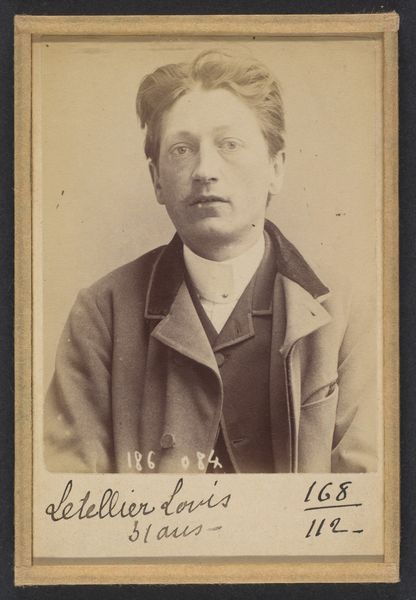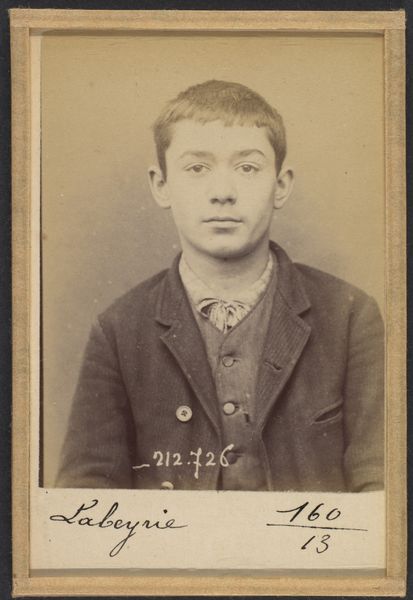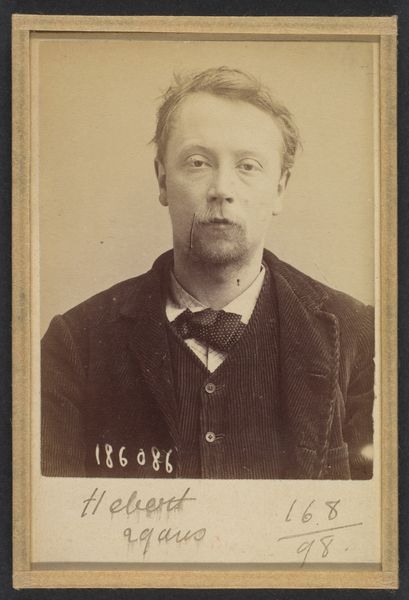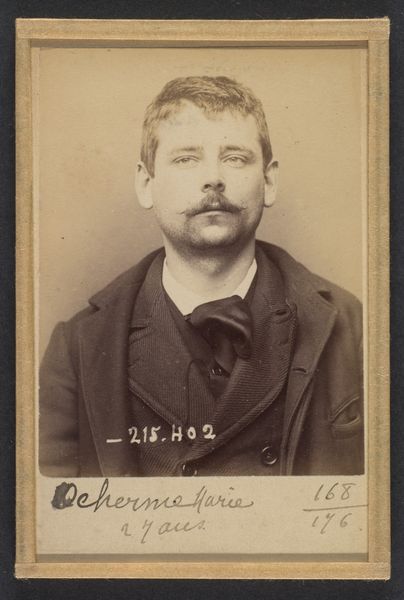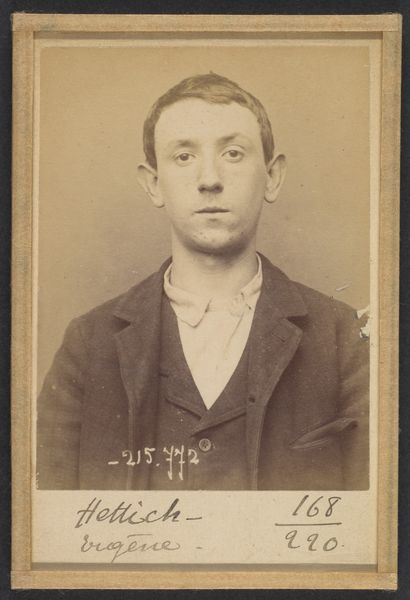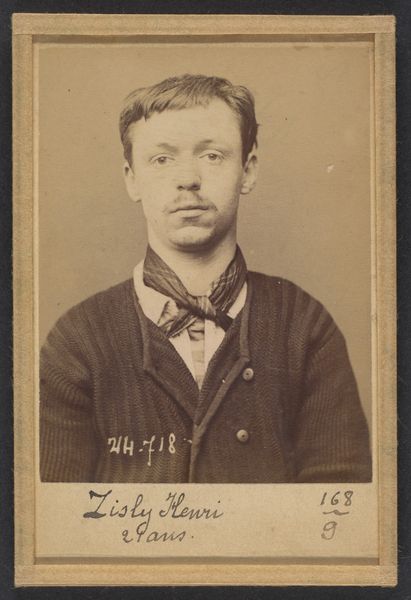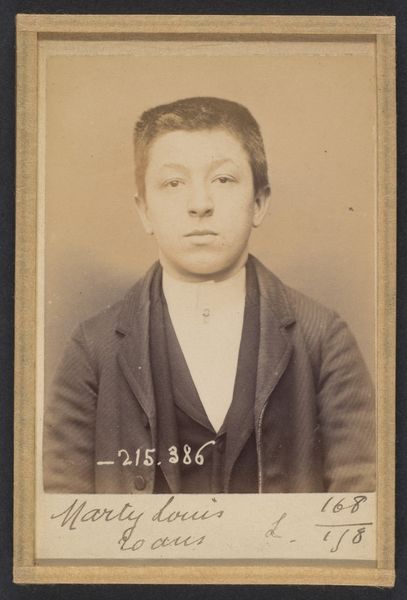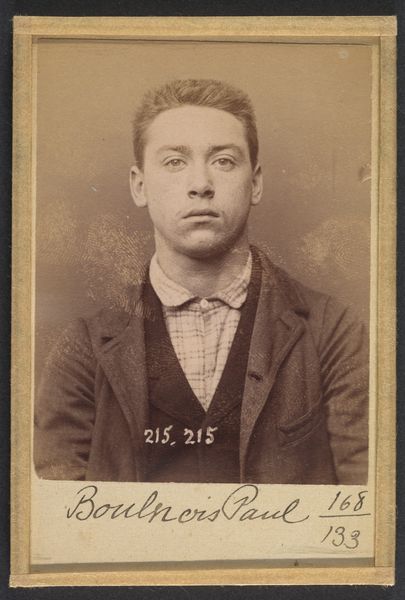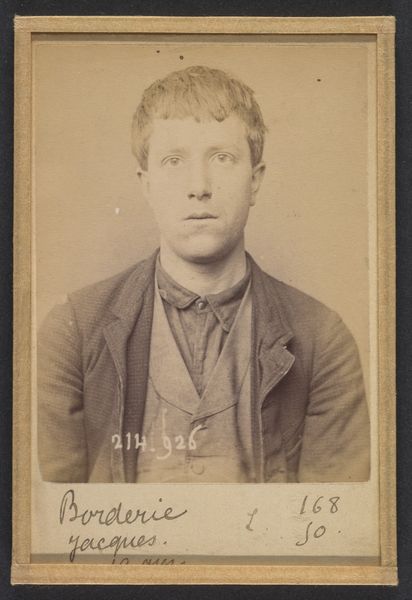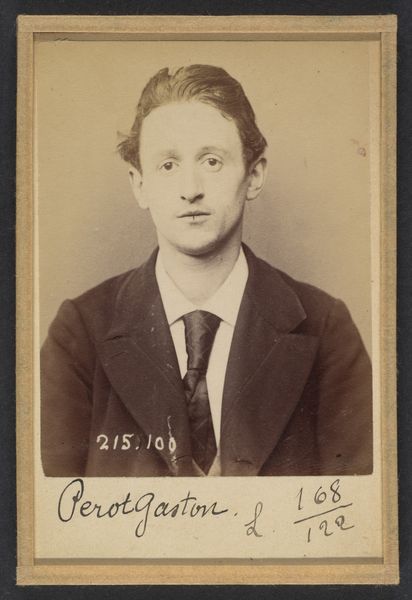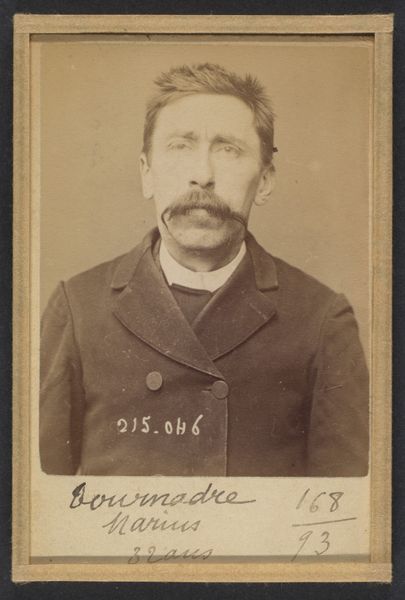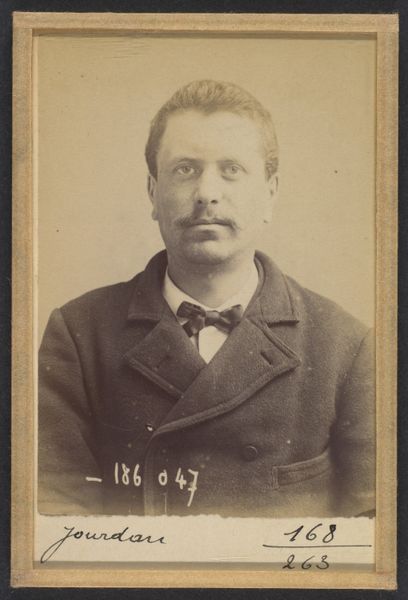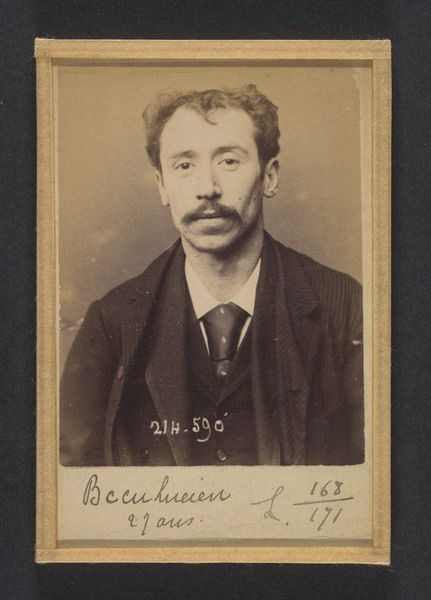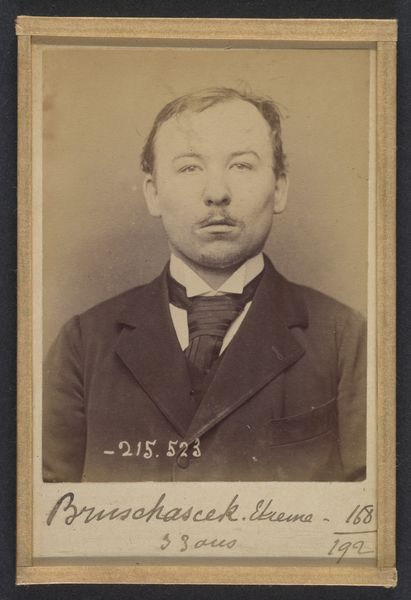
Colombo. Joseph (on Jean, Octave). 19 ans, né à Paris Xlle. Monteur en bronze. Anarchiste. 10/3/94. 1894
0:00
0:00
photography, gelatin-silver-print
#
portrait
#
photography
#
historical photography
#
gelatin-silver-print
#
genre-painting
Dimensions: 10.5 x 7 x 0.5 cm (4 1/8 x 2 3/4 x 3/16 in.) each
Copyright: Public Domain
Curator: Here we have a gelatin silver print, “Colombo. Joseph (on Jean, Octave). 19 ans, né à Paris XIIe. Monteur en bronze. Anarchiste. 10/3/94.” This fascinating image was captured by Alphonse Bertillon in 1894. Editor: The starkness of it strikes me. The subdued tonality of the photograph gives a somber quality, but more interesting is the young man's expression – so direct, unblinking almost, which imbues the picture with this peculiar, challenging gaze. Curator: Bertillon's portraits transcend simple mugshots; he sought a way to categorize criminals through precise physical measurements. His use of photography played a role in creating new tools to control the criminal class. Editor: True, the historical context casts a long shadow here. Yet, looking at this man's pose – shoulders squared, neutral background – this image moves into an unexpected formal simplicity, echoing Renaissance portraiture with its rigid frontal composition and subdued, subtle colors. Curator: Precisely. Bertillon was developing what he termed "portrait parlé," a speaking portrait, aiming to provide law enforcement with scientific descriptions to aid in the identification of repeat offenders. Editor: Beyond this intention, I wonder about its unintended effect. The tight framing around Colombo, his clear attire and gaze, brings him close, compelling you to meet his eyes and ponder the human element often obscured by archival scientific purpose. He becomes strangely sympathetic through its rigid order. Curator: It also speaks to how data was captured and categorized in the late 19th century. The image itself becomes a tool. A method that can highlight larger themes related to crime, class, immigration and ultimately, justice. Editor: This photograph, regardless of its origin, holds the capacity to evoke profound thoughts. Looking through it we perceive societal struggles inherent to an era, while the picture’s inherent artistic qualities subtly push back from Bertillon’s original utilitarian design. Curator: Yes, this is truly a piece that speaks to how social history and artistry can exist side-by-side to elicit new discussions. Editor: I quite agree, it provides us so much food for thought when we are open to engaging with both aesthetic presence and a document of difficult and complex origins.
Comments
No comments
Be the first to comment and join the conversation on the ultimate creative platform.
